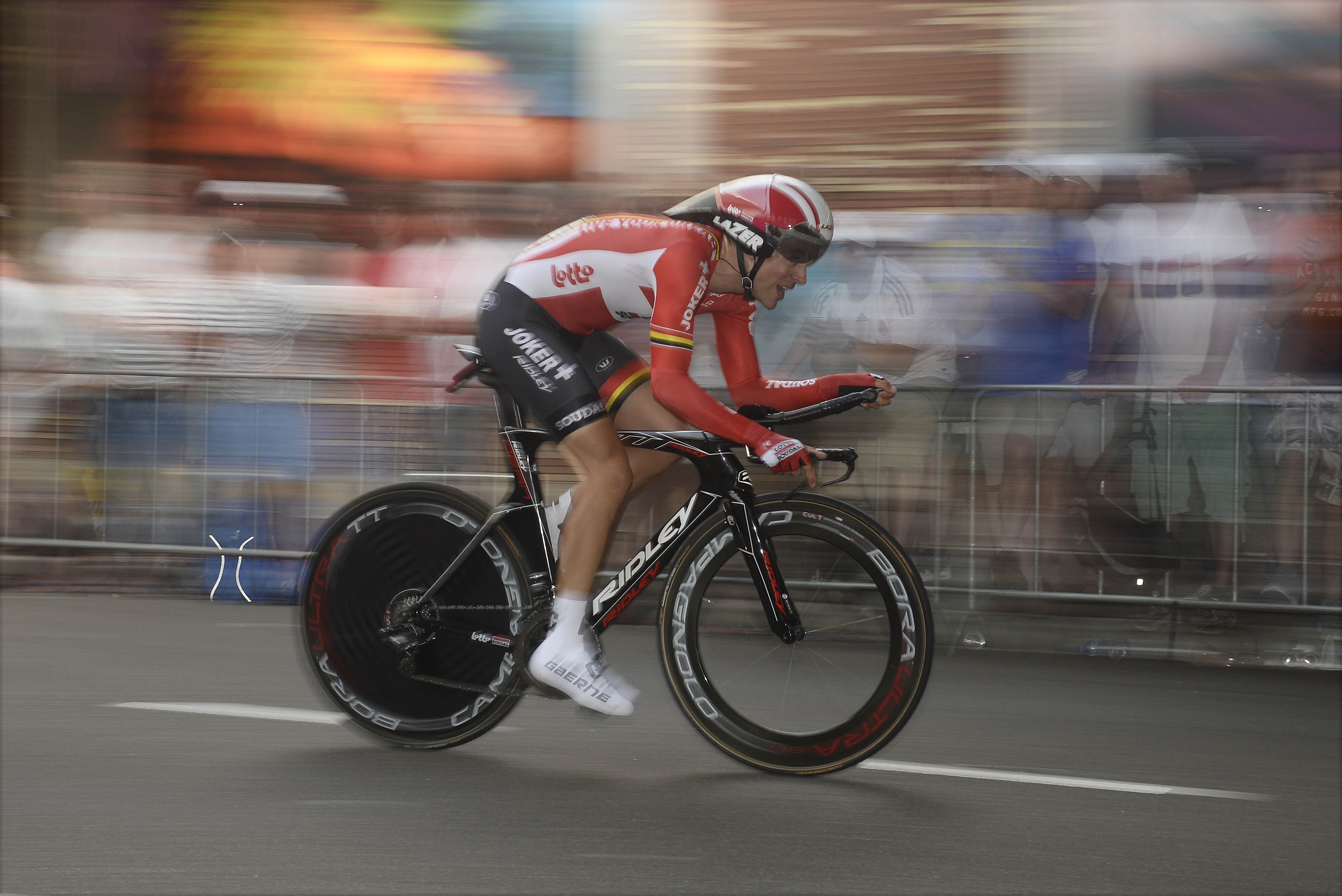Top seven time trial specific helmets used in the Tour de France
In stage one's individual time trial and Sunday's team time trial, we got to witness some top end kit all designed to save as many watts as possible. We look at some of the time trial specific helmets being used by the pros.

12 July 2015
102nd Tour de France
Stage 09 : Vannes - Plumelec TTT
Katusha
Photo : Yuzuru SUNADA
Every rider is looking to go as fast as they can using the least amount of energy. Some teams, such as LottoNL-Jumbo, have been particularly resourceful when seeking marginal gains.
Long gone are the days when Greg LeMond was seen as breaking all the rules when he chose to use time trial bars and an aero helmet in the 1989 Tour de France.
In both of the 2015 Tour de France time trials, you couldn't fail to have noticed the array of time trial specific helmets on display, from the classic long tear drop shape to some that looked a little like medieval armoured helmets.

Having a time trial helmet that fits your individual position could help you make substantial time and wattage savings.
As you’ll see below, many of the riders and teams chose to use different time trial specific helmets in the team time trial than they had used in the individual time trial.
This will have been for a variety of reasons, such as the longer distance of the team time trial, wind conditions, terrain and the amount of shelter provided by riding in a train of riders.
1. New Giro time trial helmet

The new time trial helmet from Giro caused quite a stir at the stage one individual time trial. Despite all the attention, Giro is yet to reveal the name and further details of the new helmet.
The latest race content, interviews, features, reviews and expert buying guides, direct to your inbox!

In the team time trial both Katusha and IAM riders could be seem donning the latest time trial helmet offering from Giro. The first thing you notice is the huge wrap-around visor which appears to go beyond the rider’s ears. Secondly, the front of the helmet protrudes over the visor which gives a futuristic look. The helmet has a short cut off tail and the visor is held on by a row of magnets.
Rohan Dennis rode to victory in the individual time trial wearing Giro's new helmet. However, for the team time trial the BMC riders largely reverted to what looked like a shortened version of the popular Giro Selector. This may have been due to the team trial being close to double the length of the stage one individual time trial and that save for small vents on the visor it looks like there are no other vents on the new helmet.
2. Catlike Chrono and Catlike's new time trial specific helmet

For the team time trial Alex Dowsett and the rest of the Movistar riders appeared to be using a mix of Catlike’s popular Chrono WT and the latest aero lid from Spanish helmet manufacturer.

With quite a long tail, the Chrono is not for riders who have a tendency to look down. Nairo Quintana obviously felt he was one such rider as he opted for the new Catlike helmet in both the individual and team time trials.

Compared to the Chrono the new helmet looks more like a motorbike helmet with its very short, if not close to non-existent tail. It also appears to have far more ventilation, in particular it has two large vents in the middle of the helmet and 'gills' on the side of the visor.
3. Giant Rivet TT Helmet

Giant-Alpecin are more recognised for the team’s sprinting prowess. However, they can put in a mean time trial. The Giant-Alpecin riders were seen using the Giant Rivet TT helmet, which like some of its competitors has large air vents at the front of the helmet.
The helmet looks minimalist and has a very short tail which is definitely a trend in aero helmets at the moment. Giant claims the short tail produces minimal drag in real world conditions.
4. Specialized S-Works McLaren TT

Astana and Mark Cavendish's Etixx - Quick-Step wore the S-Works TT McLaren in both time trials. The McLaren, the original of which has been around since 2012, uses a cone like profile which Specialized claims has been developed to be as aero as possible in a variety of positions, not just head on.

Due to his unfortunate crash whilst in the yellow jersey, in the team time trial Team Etixx-Quick-Step had to do without the substantial time trial ability of the former world time trial champion, Tony Martin. As shown above, Martin opts for a long tailed helmet from Specialized.
5. Kask Bambino

In the team time trial, wearing the Kask Bambino, Sky rode as a tightly knit and efficient unit to just miss out on winning the stage by under a second. The Kask Bambino with a stubby and curved tail is a prime example of how the shape of time trial specific helmets have changed in recent years.
6. Bell Javelin

Having won the team prize on stage one the LottoNL-Jumbo riders stuck to wearing the Bell Javelin for the team time trial. Although LottoNL-Jumbo were not able to repeat the success of stage one, the Bell Javelin is commonly recognised as a very competitive time trial helmet.
7. Lazer Wasp

For both the individual time trial and team time trial, Lotto-Soudal riders wore the Lazer Wasp. The Wasp has a very distinctive shape with a relatively wide front profile and a curved tail that is designed to follow the contour of the rider’s back.
It looks very fast but it is a prime example of when a rider must be able to maintain a good riding position, otherwise the long tail could be a hindrance.
Tour de France 2015 stage nine highlights